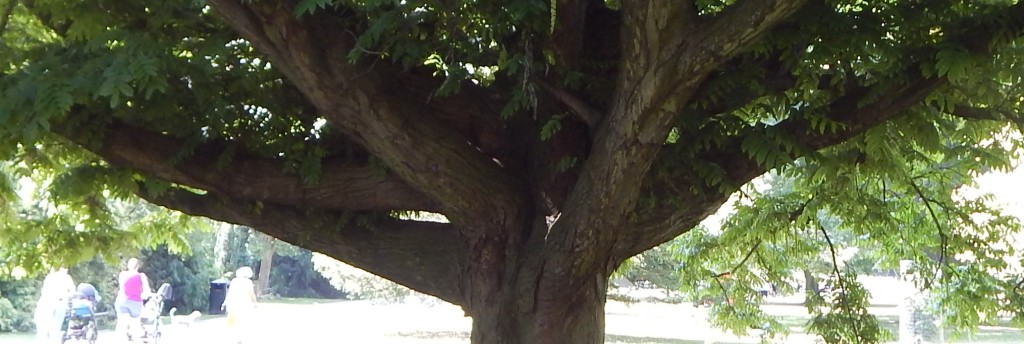
[285] Pterocarya fraxinifolia, Caucasian Wingnut
Introduction
Pterocarya fraxinifolia, the Caucasian Wingnut, is a close relative of [189] Walnuts that may be found in parks.
It is also known as the Caucasian Walnut although its fruits are not similar to walnuts. Other members of the genus Pterocarya are called Wingnuts. (Cyclocarya paliurus, the Wheel Wingnut has been moved out of the genus Pterocarya.)
(Terminalia canescens, an unrelated Australian tree known as the Winged Nut Tree is also sometimes called the Wingnut.)
Taxonomy
Kingdom – Plants
Division – Vascular Plants
Class – Angiosperms (Flowering Plants)
Order – Fagales
Family – Juglandaceae
Subfamily – Juglandoideae
Tribe – Juglandeae
Subtribe – Juglandinae
Genus – Pterocarya
Scientific Name – Pterocarya fraxinifolia
Name
The Ancient Greek pteron-karyon means wing-nut. We have met [150] Fraxinus, the Ash tree, so fraxini-folia means with leaves like Ash.
Description
This is one of very few species of which I have only ever seen one example. But it is an impressive example, a single tree, probably two hundred years old in a local park.
Pterocarya fraxinifolia grows to a large tree with a very thick trunk supporting widely spreading branches.

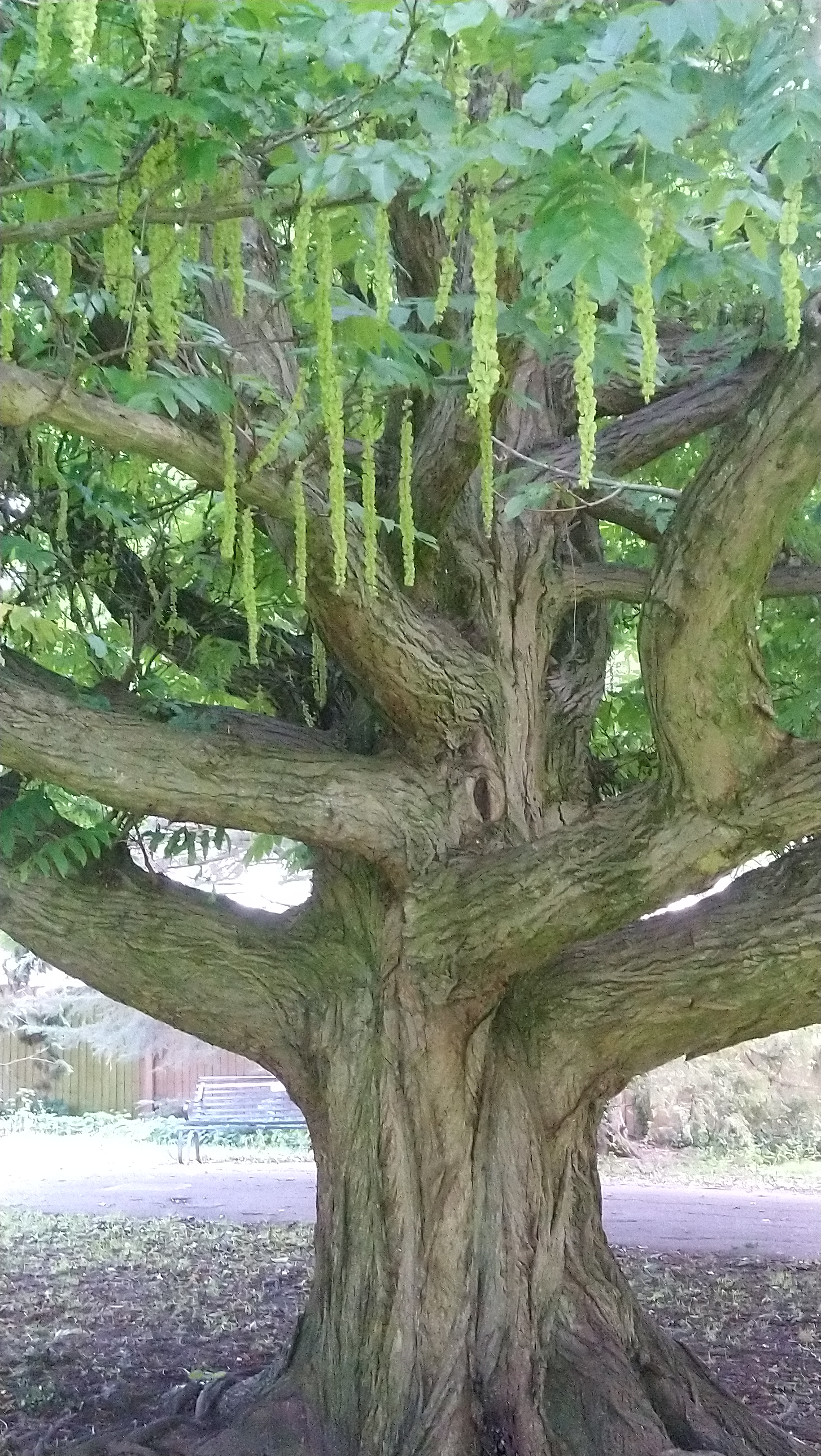
Long thin stalkless pinnate leaves can have as many as 25 leaflets.

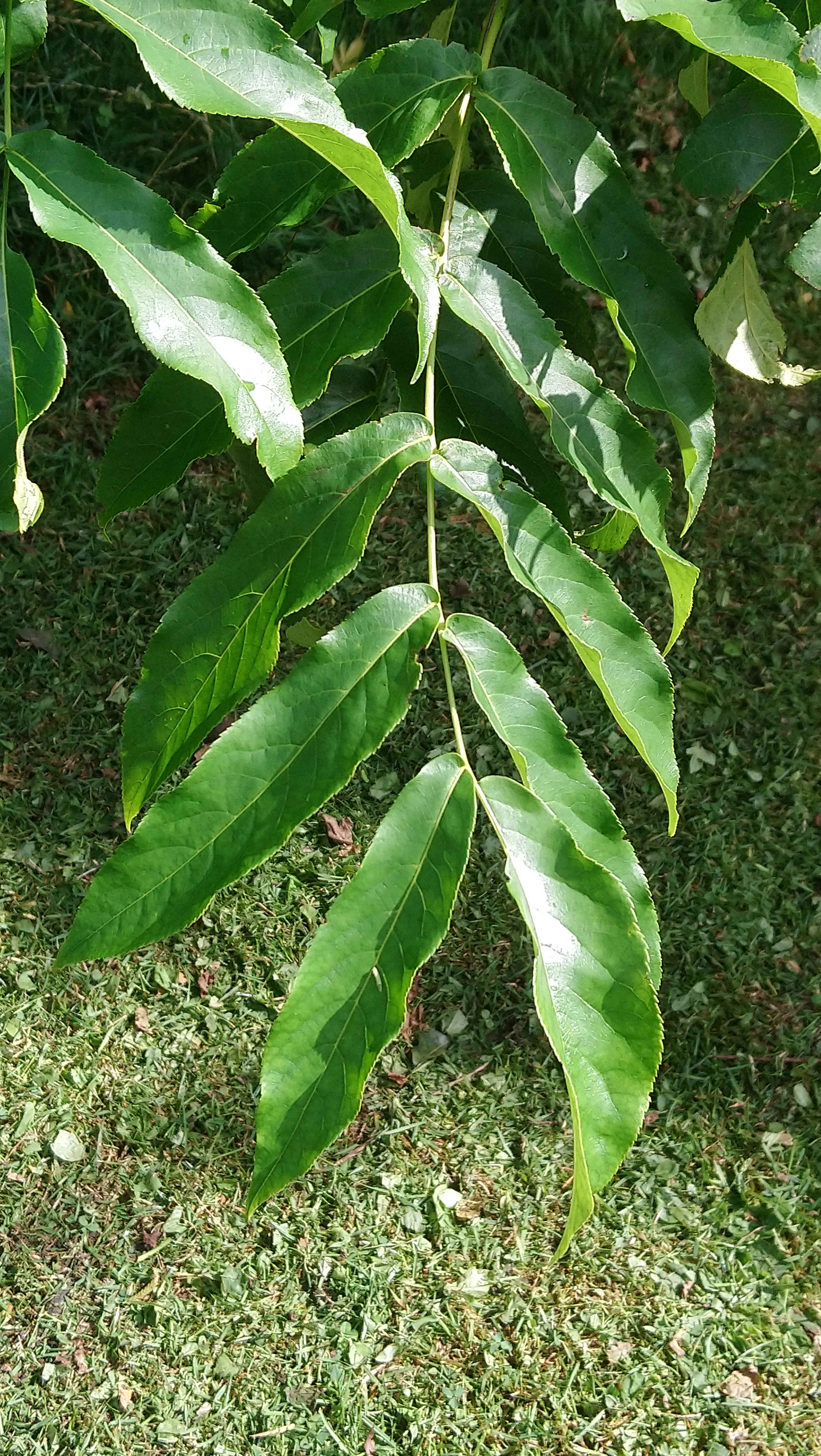
Trees bear separately both male and female flowers. Male flowers form long thick green catkins that stay on the tree for a long time, turning brown.

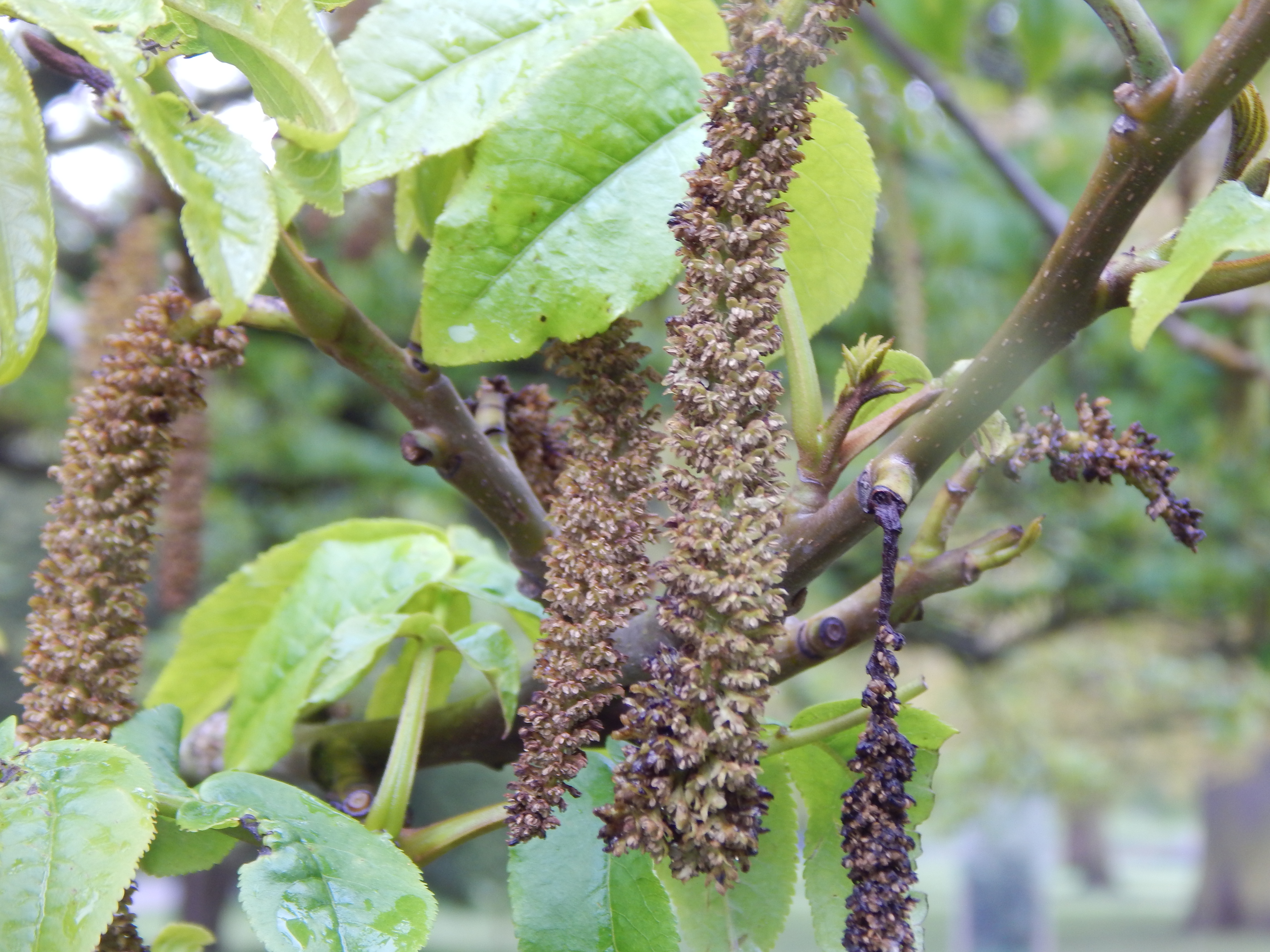


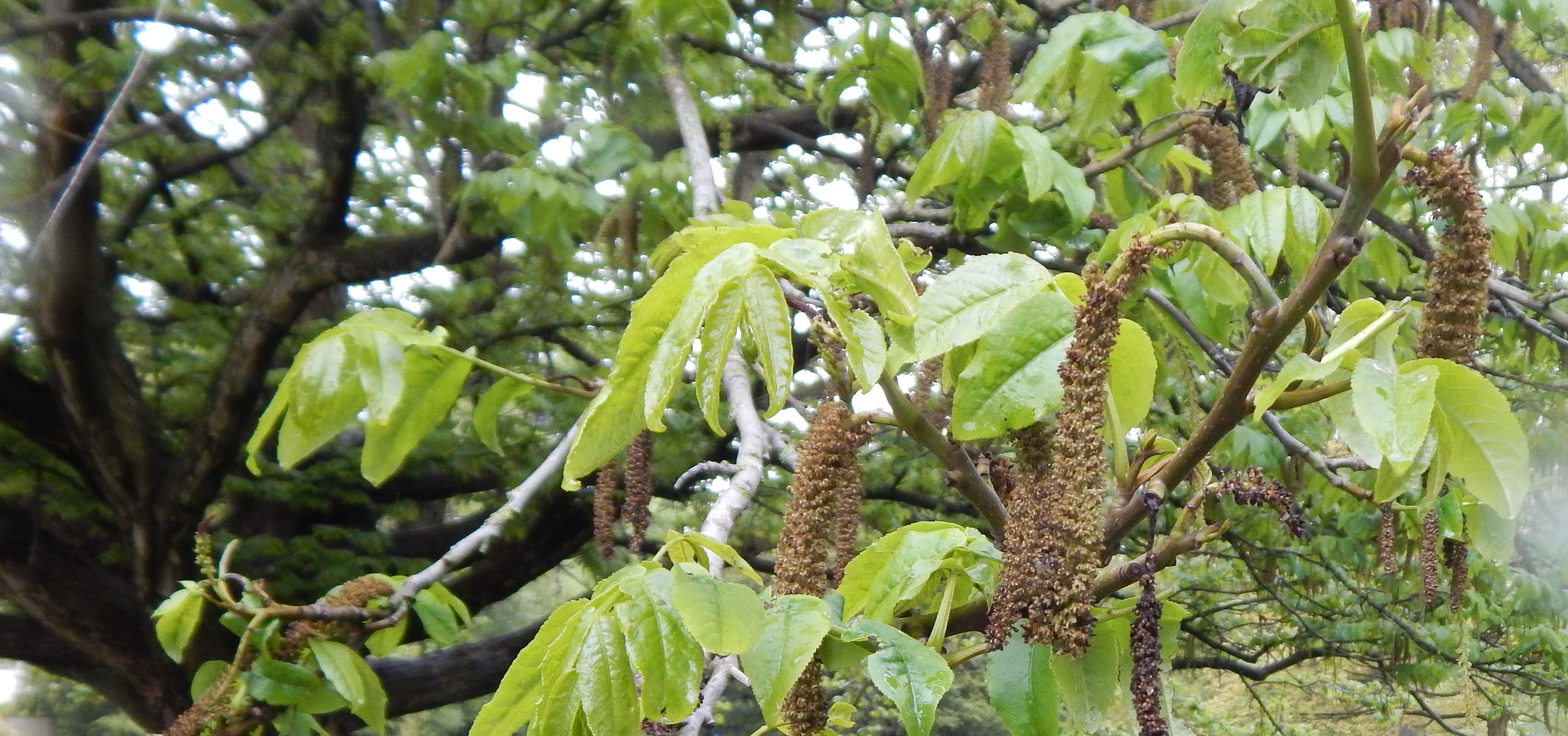
Female flowers form longer, thinner catkins, initially with red tops to the flowers. The fruits are green winged nuts.
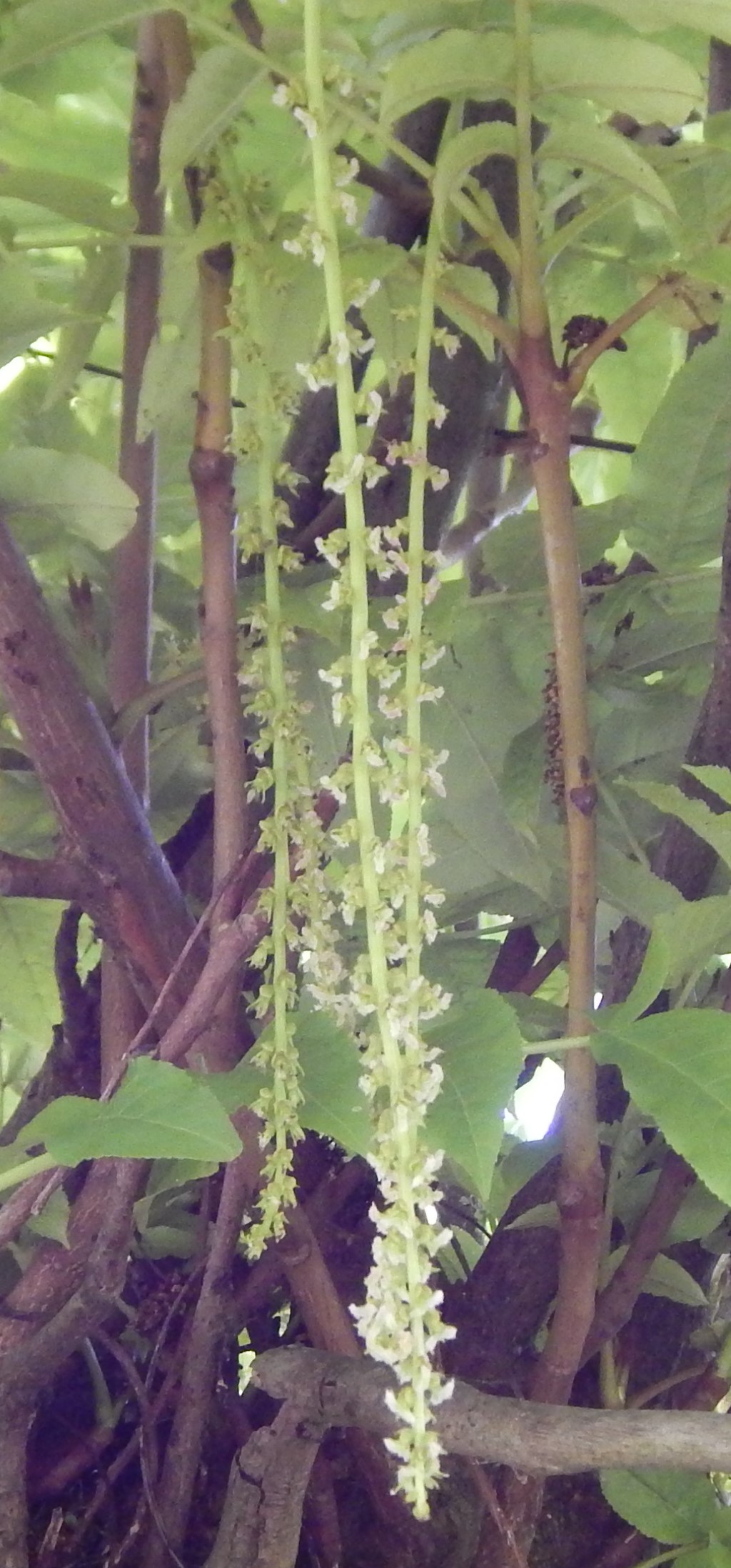
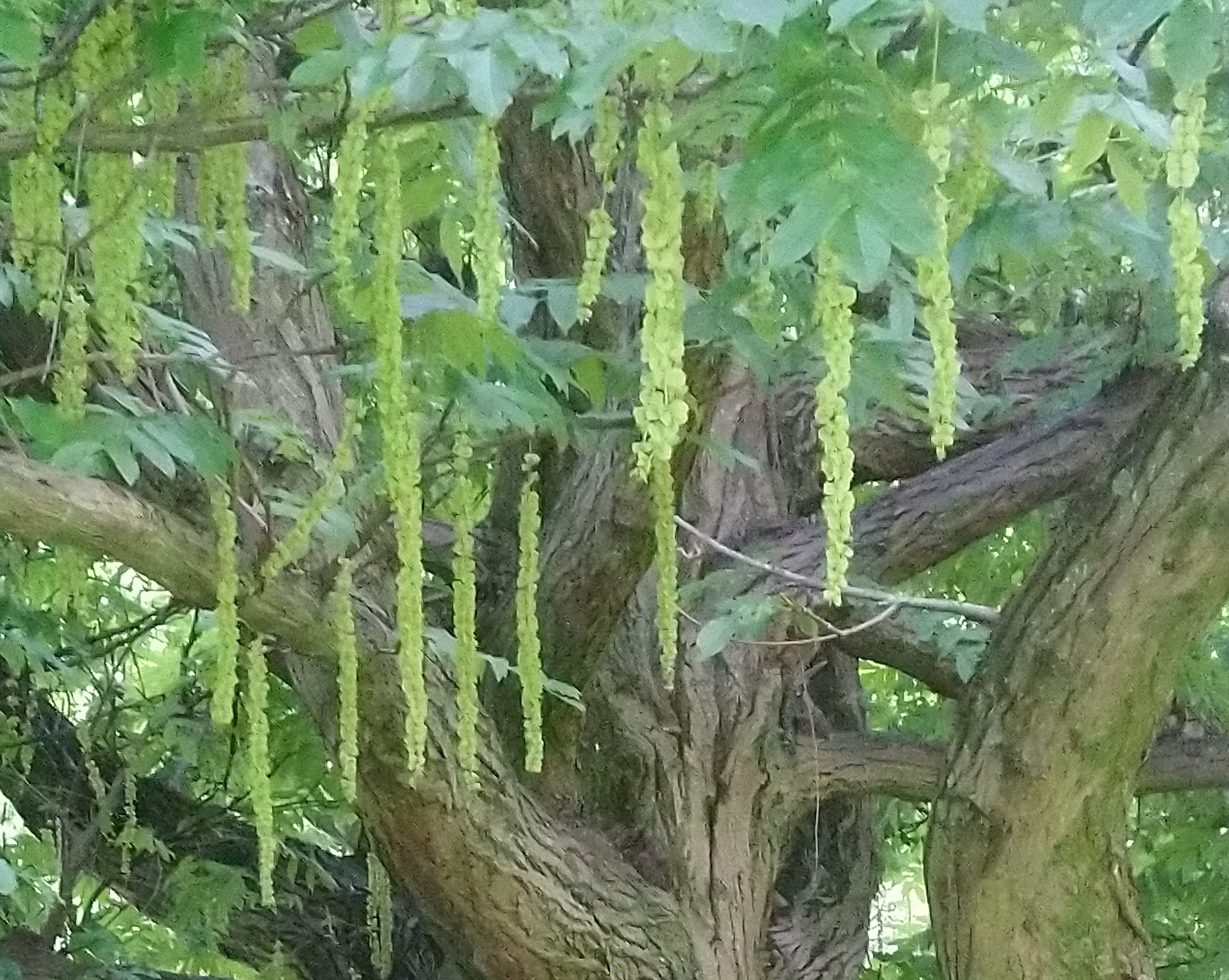
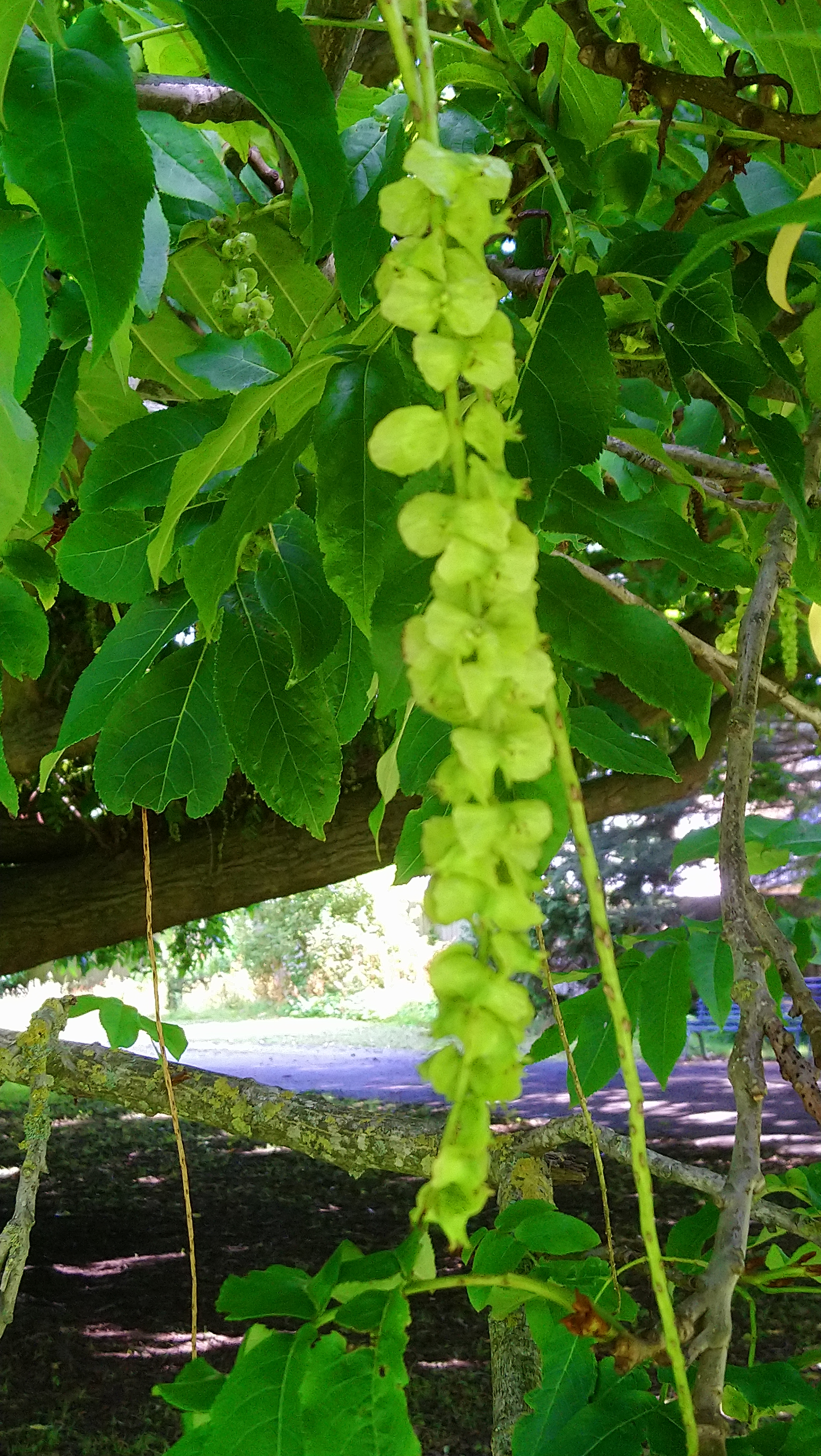


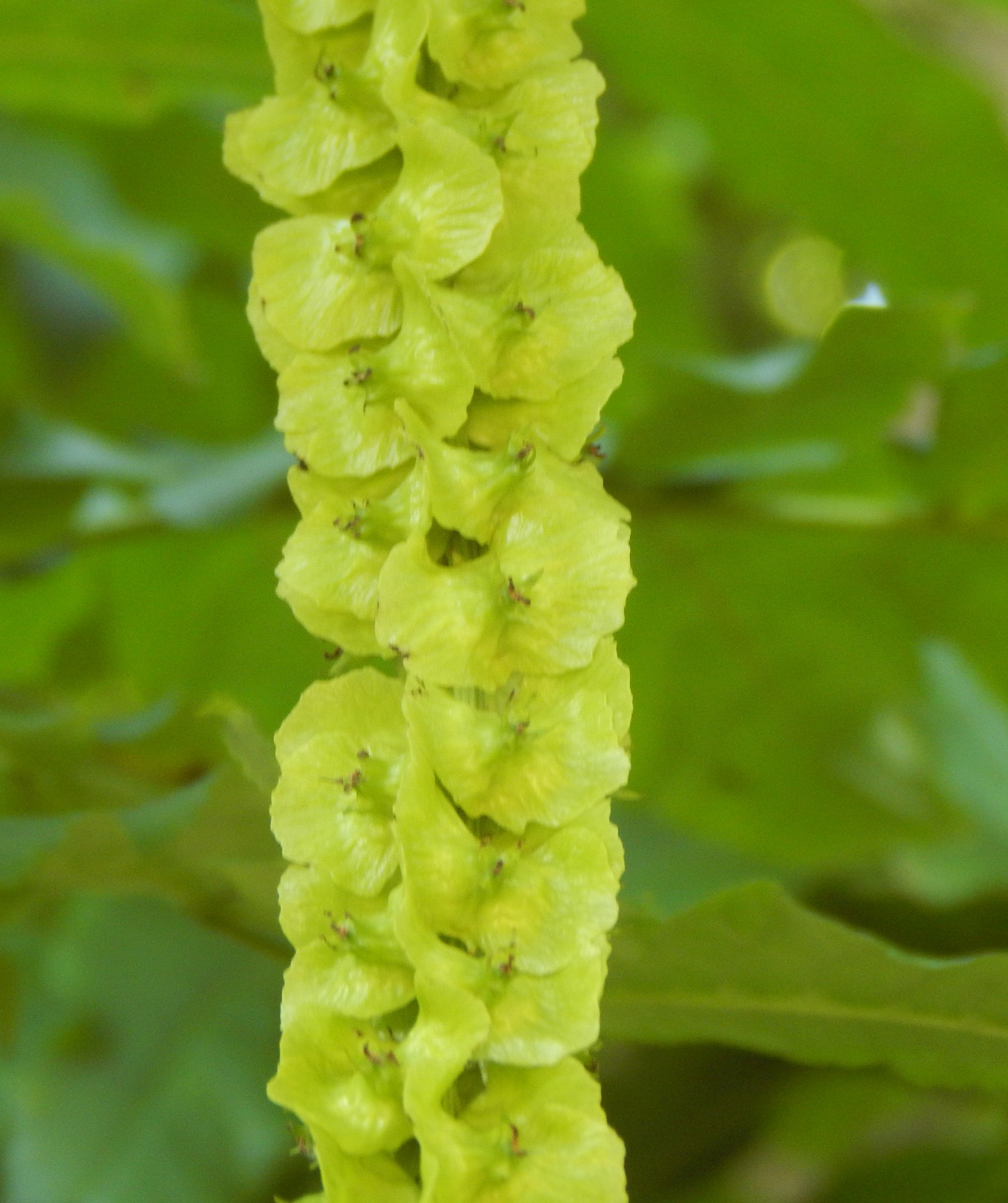

Both types stay so long that you may see both through much of the year.
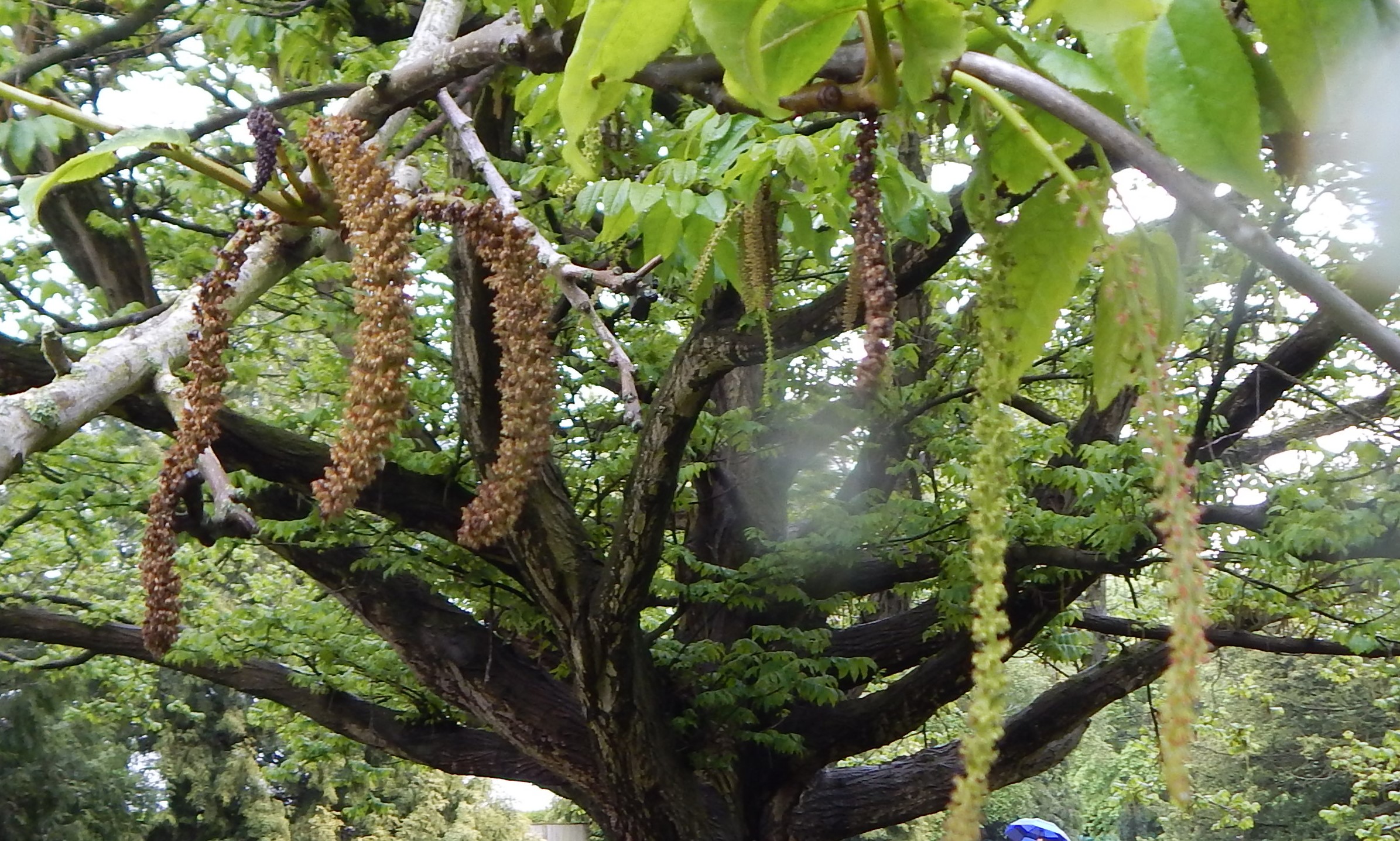

Habitat and use
Pterocarya fraxinifolia is native to a relatively small area in the Caucasus.
It is available for cultivation as are other species of Pterocarya and some hybrids and varieties. Because of their size they are not suitable for small gardens but may be seen in parks and public gardens.
Wingnuts have been grown for timber production.
Other Notes
Wikipedia says that this species was not introduced into the UK until after 1800, so I suspect that the one in Pittville Park is one of the first. It is certainly over two hundred years old.
See also
We have a few more trees to come but none achieve the stature of this species.
